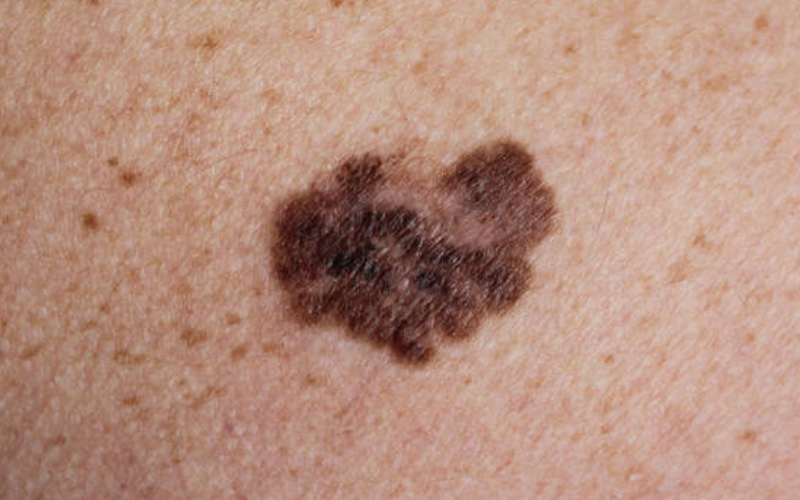4. Swelling
Swelling is another symptom of melanoma. It can occur outside the affected area, such as a mole. The swelling is caused by the growth brought about by the damaged skin cells.
Swelling can also occur in the lymph nodes. When this happens, it means the cancer cells have spread throughout the body. The lymph nodes end up swelling because it catches the cancer cells.

3. Itchiness
The itchiness may be brought about by the infected skin lesion. Another reason why itchiness occurs in melanoma is that the cancer cells have irritated the small nerve endings within the skin layers. This brings about the sensation of itching.
In a worst-case scenario, the cancer cells have done more than just irritate the skin’s nerve endings. It could be that they have damaged them, causing severe itching.
2. A Bleeding Mole
A bleeding mole can be caused by the many changes brought about by melanoma. The onset of melanoma can cause the mole to become lumpy or hard.
Since it is already affected by cancer cells, it can become irritated. Since the mole is most likely to become itchy, the tendency to scratch it is inevitable. This can break open the mole, causing it to bleed.
1. Blurry Vision
Melanoma can also occur in the eye area. When this happens, the damaged cells in the eye area multiply exponentially. They end up forming melanoma, which may cause blurry vision.
Since the cancer cells are affecting critical areas of the eyes, they can cause severe damage that can further lead to loss of vision.
Treatments And Care
Melanoma is a dangerous type of skin cancer that can lead to death if left untreated. It usually starts as a new mole or mark. Since it starts out small, there is a tendency to ignore it.
Unfortunately, ignoring it can lead to serious repercussions. If melanoma is not detected early, it can spread rapidly to other parts of the body. Early detection can prevent the condition from becoming worse.
It’s not enough to know the various symptoms of melanoma. Knowing the various treatments available for this type of health condition can provide peace of mind.
Below are various melanoma treatments and care worth knowing about.
9. Nutrition Therapy
Nutrition can have an impact on the progression of melanoma. Research suggests that certain diets can boost the response to melanoma treatments. Personalized nutrition for melanoma involves developing a plan based on a patient’s individual genomics.
This plan minimizes foods that have adverse interactions and identifies foods that have beneficial interactions. Among the active ingredients found in foods are antioxidants and vitamins A, B, C, and E. Some of these have been shown to help protect against UV rays. These vitamins and antioxidants also support the immune system.
8. Exercise
The benefits of exercise may include reducing the risk of the disease, enhancing the effect of chemotherapy, and improving the overall quality of life. A moderate exercise regimen can have a significant impact on a cancer patient’s overall quality of life.
A regular moderate exercise program is also a good way to help reduce the side effects of chemotherapy and immunotherapy.
(continued next page)
